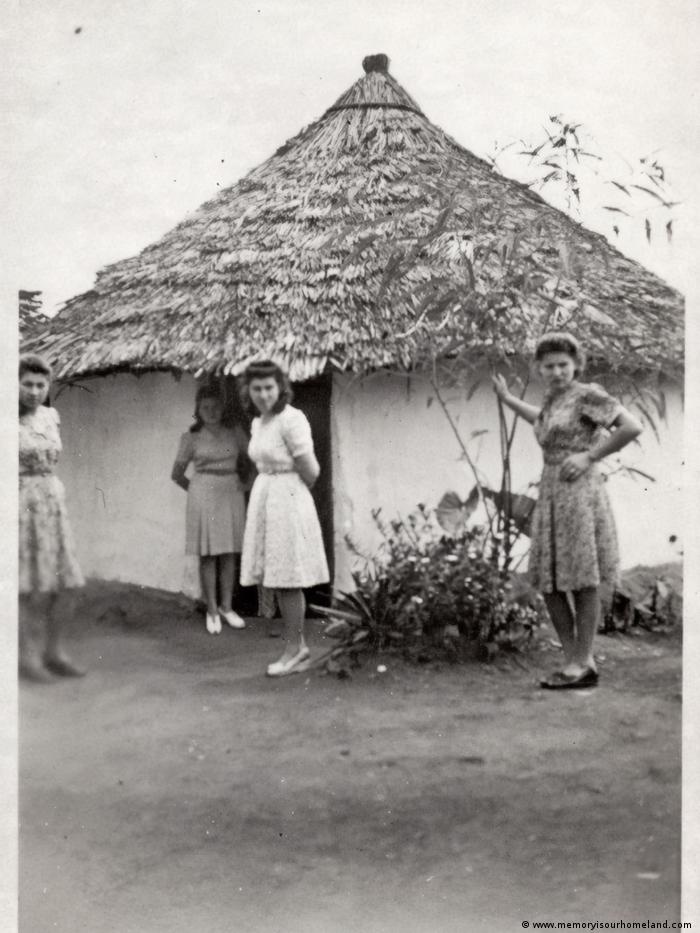Although exact figures are not known, it’s thought that at least 19,000 Polish people, including many children, took refuge in Africa during World War II. The Polish migration to Africa is believed to have its roots in an event from August 1939 when Adolf Hitler and Joseph Stalin signed a non-aggression deal that divided several eastern European countries, including Poland, into German and Soviet spheres of interest.
Germany and the Soviet Union invaded Poland after this pact, triggering World War II. Like the Nazis in the west of the country, the Soviet Union began to carry out ethnic cleansing. They deported hundreds of thousands of Poles, including many Jews, in four waves to forced labor camps in remote Russian regions such as Siberia and Kazakhstan.

In 1941, the tables were turned when Germany invaded the Soviet Union, forcing Russia to join the Allies. This generated an amnesty for the Poles in the USSR. Unable to return to war-torn Poland, some 116,000 Poles living in the Soviet Union were evacuated to Iran, which had been invaded by the Anglo-Soviet alliance. But Iran proved unable to care for such large numbers of refugees, causing the British government to move Polish civilians to other British colonies.
It was by this tortuous route that the Polish deportees arrived in Tanzania, South Africa, Zimbabwe and other parts of British Africa to see out the rest of World War II.
A Canadian filmmaker corroborates this assertion when he took a trip to some African countries to explore the journey of his Polish forefathers in a documentary. When Canadian Jonathan Durand arrived in Africa for the first time as a 20-year-old, according to him, he experienced a strange sense of being at home, an odd feeling for a young white man. It took a while for Durand to understand why Africa seemed so familiar to him, reports DW.
During and after World War II, his Polish grandmother Kazia Gerech had lived in a refugee camp in what is present-day Tanzania — the stories of her childhood near the foot of Mount Kilimanjaro had burned into his soul.
As a history student, he was surprised about the lack of information about Poles seeking sanctuary in Africa — his professor had never heard of Polish refugee camps in Africa. This was his motivation to start his research and produce the documentary. The resulting film, “Memory is our Homeland,” won the Audience Award at the Montreal International Film Festival in 2019.
Durand relied greatly on his grandmother’s testimonies about her life in the small town of Tengeru in northern Tanzania. From 1942 to 1949, Gerech lived with her siblings and parents in a simple thatched hut in Tengeru in what was then the British-administered territory of Tanganyika (now Tanzania).
The filmmaker embarked on an emotionally charged nine-year journey that took him to Eastern Europe, the Middle East, and Africa. During his travels to the former Polish refugee camps in South Africa, Tanzania and Zambia, Durand said that local people “had good memories of the Poles,” who farmed and sent their children to school.
Like his grandmother, the Polish refugees also have a positive memory of the locals, says Durand. “They were young, and these intercultural encounters have shaped their humanity,” he told DW.

Migration expert Julia Devlin who is the head of the Center for Flight and Migration at Germany’s Catholic University of Eichstätt-Ingolstadt also validate the story that Africans provided a safe haven to European victims of the World War. According to her, “It was a friendly existence, side by side. Locals from Tengeru and the Poles even sometimes celebrated mass together,” reports DW.
After the end of WWII in September 1945, the African host countries pushed to get rid of the Polish refugees. “African countries were on their way to independence and didn’t want reminders of colonial rule,” said Devlin.
But Poles were reluctant to return to their homeland, which was under staunch Soviet control. Eventually, they migrated mostly to Australia, Canada, and Great Britain. Durand’s grandmother made it to England in 1949. There she met her husband, a Pole and a survivor of the Majdanek concentration camp. Together, they immigrated to Canada.
Of all the research Durand undertook, one discovery made a great impression on him. At the Polish Institute in London, he found the only existing film footage from the Tanzanian refugee camp where his grandmother had lived.
“I recognized the hospital and a group of young girls walking toward the camera. On the left, smiling and with her arms crossed — that was my grandmother,” says Durand. He still gets goose bumps when he looks at the footage today.










